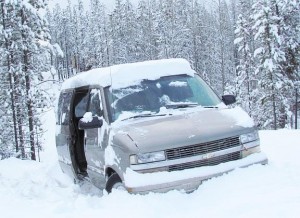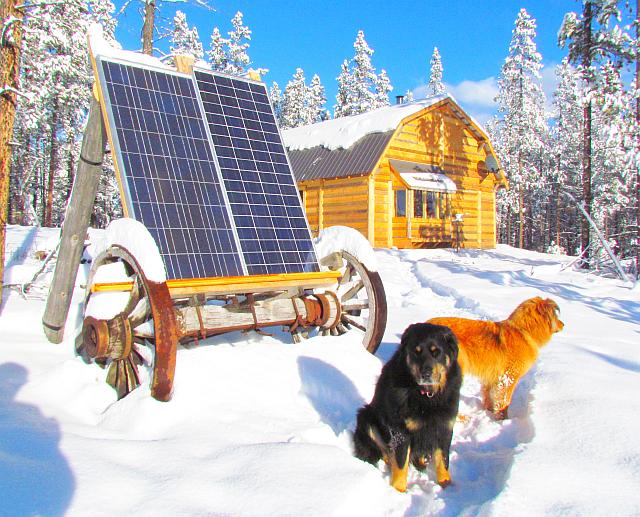7th January 11
I am snowed in. We had about 7 inches of fluff last night, on top of the same amount that was already on the ground. Usually we get most of our snow before Christmas. 2 feet is average; one year it was chest deep.
My van is AWD and really good in snow and ice conditions, but has very little clearance. I tried driving out, hoping that I could buck the snow by staying in the packed down ruts. I loaded the van with tools. An axe lives in it year round in case a tree falls on my 3-mile bush road: I have chopped one out already this winter. The axe is not very sharp, but it is better than having to use teeth and fingernails to clear the road. Now I added a shovel, comealong, ropes, and the snowshoes in case I go stuck a long way from home and had to walk back. But I didn’t get very far and slewed off the packed tracks into the deep stuff at the first little hill.

It is hard to see, but the house is just visible through the trees directly above the open side door of the van.
Not only did I have to dig the wheels free, I also had to drag snow from underneath the vehicle where it had piled against the differentials. Fortunately it was in a wide spot on the road and I was able to do a multi-point turn, digging myself out at each angle, and drive back to the house. I phoned the guy who will come and plough me out but he works all day and won’t get my message until tonight. There are no cell phone frequencies anywhere near here: wilderness dwellers have to be patient.
Routine for New Snow
I have a little routine whenever we get any amount of snow. The first trips anywhere outside are made with snowshoes, even if the new depth is not much. This means the trails do not end up with deep boot holes that freeze and make the surface bumpy and slippery. So at first light I shuffled to the outhouse, the bird feeder, and the solar panels. The panels need to be brushed free of snow before any power can be generated.
If it is mild and the covering is little, it will soon melt off, but I do not want to waste a moment of sunshine on these short days. (The black dog in the picture is Badger, the golden one is Harry.)
Because the snow was relatively thick I also trudged to the satellite internet dish and knocked the snow of it with the broom. Both snow and thick cloud can block the signal.

